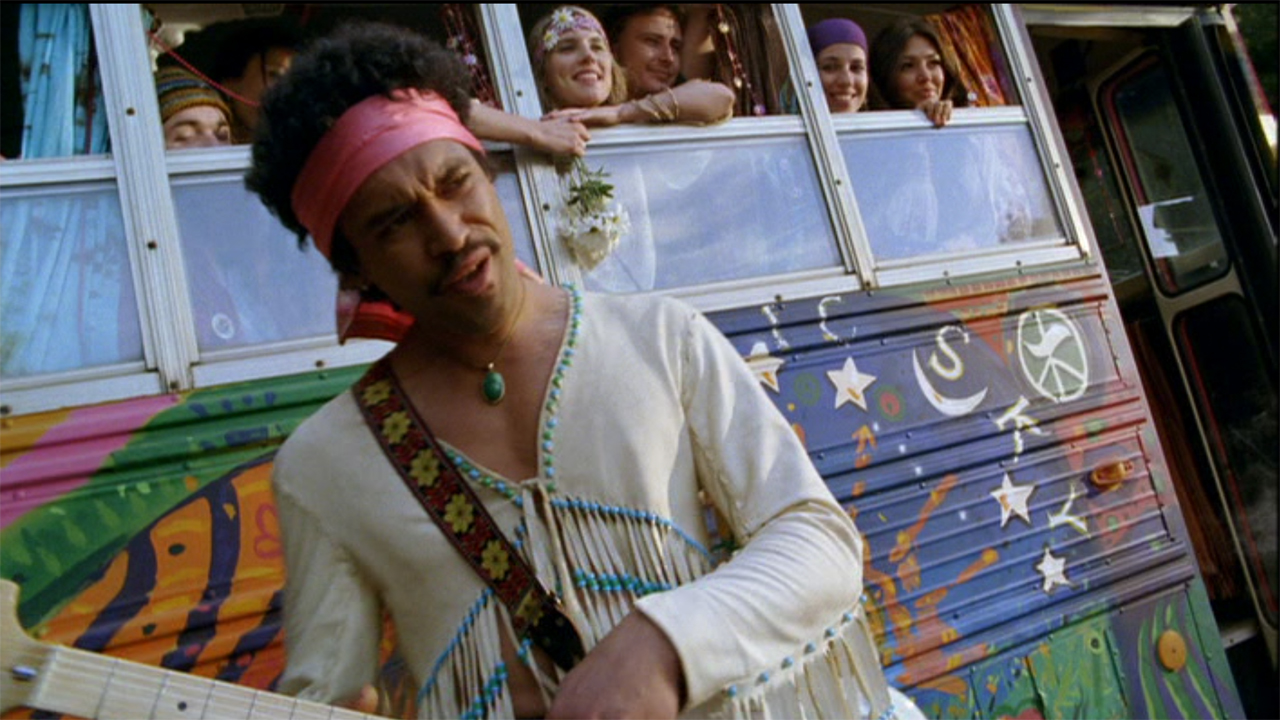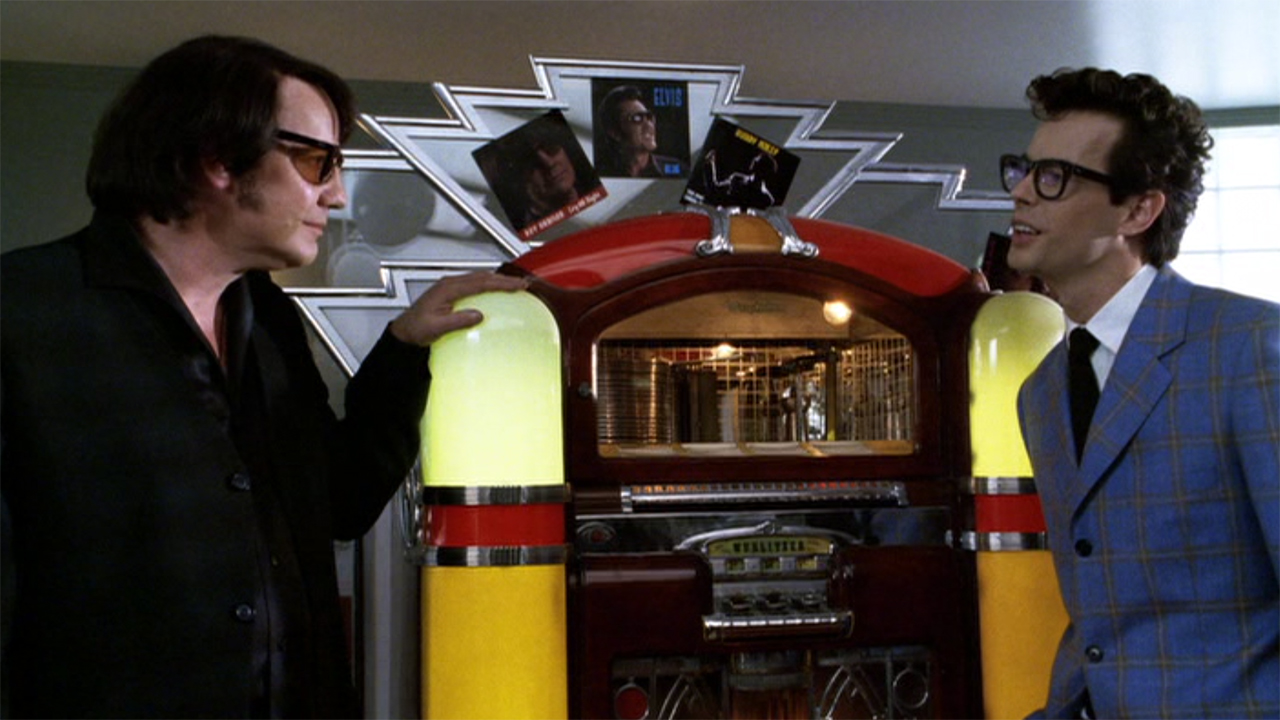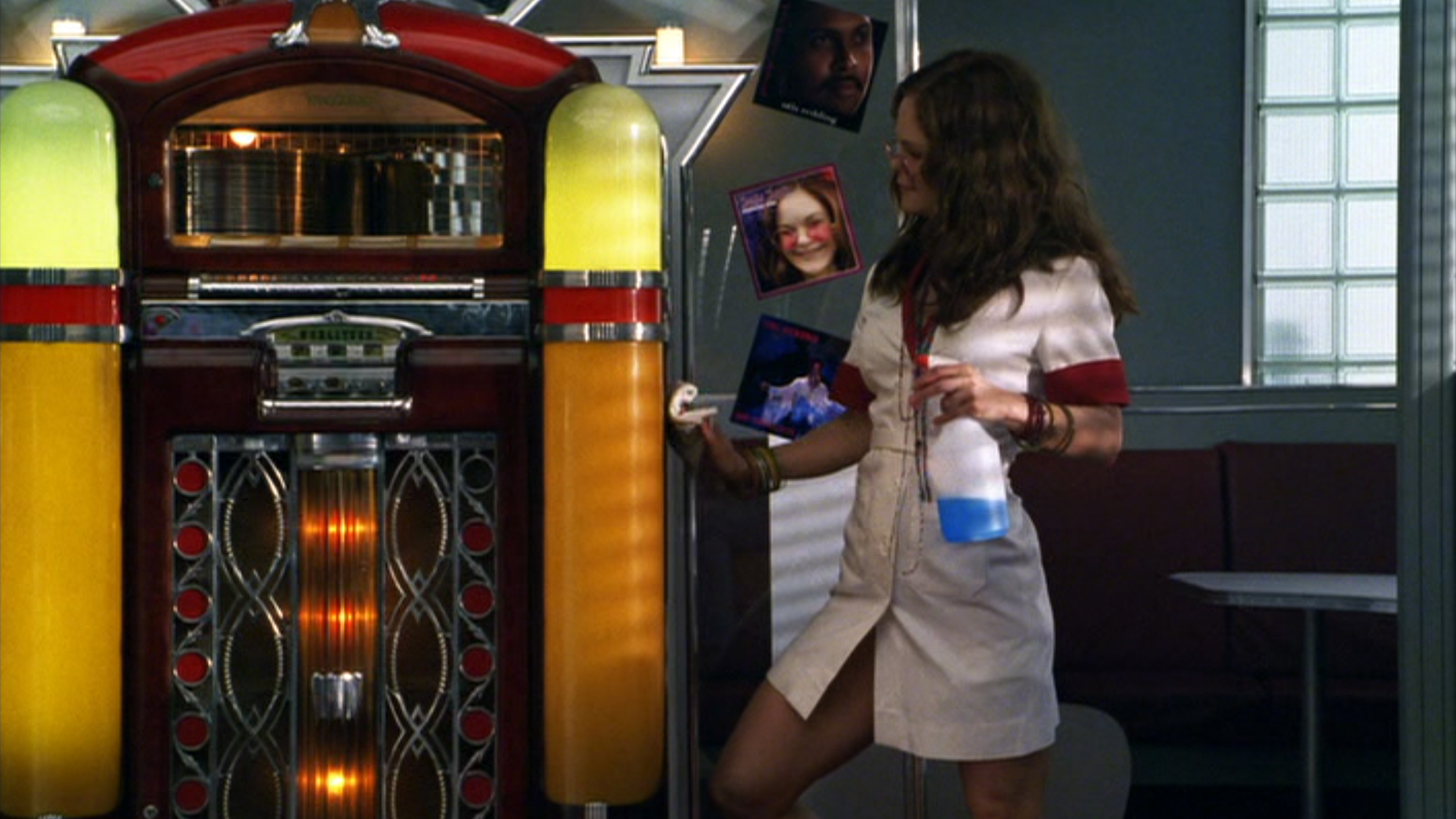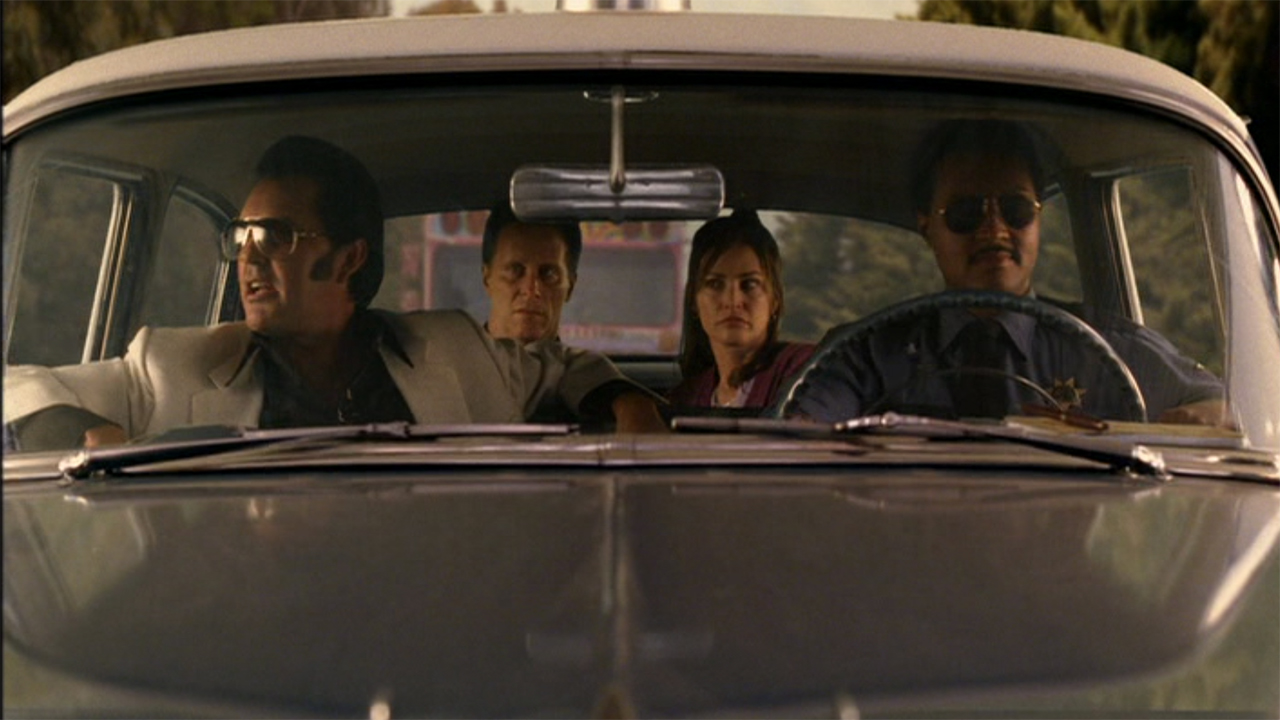Adapting Stephen King's You Know They Got A Hell Of A Band: Nightmares & Dreamscapes' Finale Is A Freaky Trip To Rock 'N Roll Heaven
Starring Steven Weber and Kim Delaney.

Between the six collections that Stephen King has published to date – Night Shift, Skeleton Crew, Nightmares & Dreamscapes, Everything’s Eventual, Just After Sunset, and The Bazaar Of Bad Dreams – there are more than 80 stories that have not yet been adapted for film or television. Assuming that Nightmares & Dreamscapes: From The Stories Of Stephen King stuck with eight-episode seasons, that means that there is presently enough source material that could have kept the show going for a full decade. Sadly, however, that’s not the story told by television history.
As I noted a few weeks ago in my column about Episode 3 of the series, “Umney’s Last Case,” it didn’t take long for Nightmares & Dreamscapes to take a dip in the ratings. Its premiere in early July 2006 was a success, with an average viewership of 5 million recorded for the airings of “Battleground” and “Crouch End,” but that number was nearly split in half for week two, and it quickly became clear that the Stephen King-centric anthology wasn’t going to be the massive hit that TNT was hoping it would be. According to Stephen King Films FAQ by Scott von Doviak, there were some talks about a Season 2, but at the end of the day it became another title added to the legacy of “canceled-too-soon” shows.
The short-lived run came to an end on Wednesday, August 2, 2006 with the airing of “You Know They Got A Hell Of A Band” – which played in the back half of the two hour time slot on TNT opposite “Autopsy Room Four.” Veteran TV director Mike Robe has the distinction of being the only filmmaker who both wrote and directed their own episode of Nightmares & Dreamscapes, and he enlisted Kim Delaney and Stephen King veteran Steven Weber as the leads in the freaky trip to Rock ‘N Roll Heaven.
It’s not exactly a case of saving the best for last (pretty far from it, actually), but it certainly has its merits, and I get into all that and more in this week’s Adapting Stephen King.

What “You Know They Got A Hell Of A Band” Is About
Reading “You Know They Got A Hell Of A Band,” Stephen King fans may experience a touch of déjà vu. The story begins following a married couple on a road trip, and tension between them is high as they suddenly come upon a peculiar little town in the middle of nowhere. As it turns out, this unassuming enclave is home to some spectacular nightmares.
If you’re now thinking, “That sounds like a vague description of ‘Children Of The Corn,’” you are definitely not wrong. It is, however, also the basic structure of “You Know They Got A Hell Of A Band” – which was first published January 1992 in the horror anthology Shock Rock (15 years after “Children Of The Corn”) before being featured in the King omnibus Nightmares & Dreamscapes.
In the Notes section of Nightmares & Dreamscapes, Stephen King not only directly addresses the commonalities between the stories, but he even ropes another title into the mix: “Rainy Season,” which is also in the collection, but hasn’t been adapted to date. Rather than calling these tales an example of “self-imitation,” however, he makes a musical analogy – noting what artists like John Lee Hooker, Bo Diddley, Muddy Waters and more blues musicians have done with the two classic guitar chord progressions in the genre.
Your Daily Blend of Entertainment News
When it comes to crafting horror stories, there are archetypes that storytellers lean on, and what’s at the heart of “Children Of The Corn,” “You Know They Got A Hell Of A Band,” and “Rainy Season” (not to mention the 2012 novella “In The Tall Grass,” which Stephen King co-wrote with his son, Joe Hill). King writes in Nightmares & Dreamscapes,
There are certain horror-tale archetypes which stand out with the authority of mesas in the desert. The haunted-house story; the return-from-the-grave story; the peculiar-little-town story. It's not really about what it's about, if you can dig that; this is, by and large, the literature of the nerve-endings and the muscle-receptors, and as such, it's really about what you feel.
The feeling that Stephen King wanted to explore with “You Know They Got A Hell Of A Band” was the horror and devastation that comes in recognizing just how many brilliant musicians have tragically died in the last century – many of them passing away before even hitting the age of 30. Being a passionate rock ‘n roll fan (and former member of the Rock Bottom Remainders), King wanted to examine what he refers to as an “actuarial expert's nightmare” with the short story, and tear away the romanticism that can be associated with the deaths of genius talents like Roy Orbison, Jimi Hendrix, Buddy Holly, and Elvis Presley.
Instead of driving through the vast expanses of Nebraska like in “Children Of The Corn,” “You Know They Got A Hell Of A Band” has protagonists Clark and Mary Willingham lost in the backwoods of Oregon – the former deciding to take a scenic route on their long road trip, much to the displeasure of the latter. By the time they find themselves on a road that they notice has no telephone wires, it’s getting toward the middle of the afternoon, and reversing course is no longer an option if they want to reach some semblance of civilization before the sun sets.
Mary’s animosity grows towards Clark’s impetuousness and stubbornness, but those feelings start to transform into fear when they come upon a sign signifying that they are about to enter the peculiar little town of Rock ‘N Roll Heaven, Oregon. At first the place seems kind of silly, but Mary can’t shake how the idyllic place feels ripped straight out of an episode of The Twilight Zone.
While Mary just wants them to move on, Clark insists on getting a Pepsi at the local diner, and their stay at the establishment is elongated when he is upsold on a slice of cherry pie. This provides enough time for the nervous-looking waitress to slip Mary a note saying “GET OUT WHILE YOU STILL CAN” and notice that the other employees at the restaurant bear startling resemblances to Janis Joplin and Ricky Nelson… so much so that they could actually be the dead music legends.

How Nightmares & Dreamscapes’ “You Know They Got A Hell Of A Band” Differs From The Short Story
Every episode of Nightmares & Dreamscapes: From The Stories Of Stephen King is appropriately faithful to the respective original work, which is unsurprising given that the whole enterprise is basically a love letter to the titular author. That being said, the vast majority of them also make certain changes and alterations for practical and pragmatic reasons – be it “Battleground” being too short to fill up 45 minutes of content; “The End Of The Whole Mess” being transformed from a journal entry into a documentary; or “Autopsy Room Four” aiming to be more cinematic by not staying locked into the paralyzed protagonist’s perspective.
“You Know They Got A Hell Of A Band” is an exception – and it’s perhaps why it was held to be the season/series finale of the anthology show. The short story and the episode are a perfect match of source material and medium, as the only changes one finds when putting the story and adaptation side-by-side are minor details that don’t really have any kind of macro impact.
An example? Toward the end of the episode, Clark (Steven Weber) and Mary (Kim Delaney) are trying to speed away to freedom from Rock ‘N Roll Heaven when they crash into a psychedelic bus that is parked across the road. Jimi Hendrix (Che Timmins) emerges from the planted vehicle, and then a cop car driven by Otis Redding (Bert LaBonté) arrives with Mayor Elvis Presley (Joe Sagal) in the passenger seat.
This is very similar to what happens in the original version, but not precisely. As written by Stephen King, nobody is aboard the bus when the married couple crashes into it, and Mary merely imagines that the person driving the approaching cop car will be Jimi Hendrix. It turns out to be Otis Redding driving the car, and Hendrix never formally appears in the story.
The only other modestly significant alteration is the name of the waitress who tries to warn Clark and Mary that they are in danger of being held hostage in Rock ‘N Roll Heaven – forced to attend evening concerts that run on for as long as a year. As portrayed by Jacinta Stapleton in the adaptation, the character is named Cece Pryor, but her name is Sissy Thomas in King’s story. When changes like this are made, it’s usually for legal reasons (for example, there could have been a Sissy Thomas living in Oregon at the time the show was made, and the producers didn’t even want to remotely risk the chance of a lawsuit).
Beyond those super minor details, what Mike Robe does with “You Know They Got A Hell Of A Band” is basically create a facsimile.

Is It Worthy Of The King?
When discussing the craftsmanship of horror, filmmakers often love to reference Steven Spielberg’s Jaws: during production, the mechanical shark kept breaking down, but it ended up being for the film’s benefit because nothing is more frightening than what is conjured in the imagination of the audience. If a scary movie properly sets things up, it doesn’t actually have to show you anything if it wants to deliver a devastating scare.
In a less positive sense, a similar principal can be observed in the adaptation process. When reading a book, a perfect depiction of what’s being described by an author is conjured in your mind – and it’s not always possible to bring that vision to reality. This is a problem that stands out in the Nightmares & Dreamscapes episode “The Road Virus Heads North,” which features a haunted painting that just looks like… a painting. It’s also the key issue with “You Know They Got A Hell Of A Band.”
As much as one might want to fall into the horrific fantasy that is depicted in the episode, it’s ultimately impossible to ignore the fact that you’re not looking at dead rock stars, but instead actors with familiar facial features and recognizable styles. It ruins the whole illusion that the story is trying to create – which is confronting the audience with the tragedy and horror in the deaths of so many modern virtuosos. It comes across like cosplay.
Admirable as it is that the Mike Robe would stick so close to the source material, it’s also hard to ignore the fact that nothing much happens in the first half, and the character development featured doesn’t result in any kind of significant payoff. It’s not the most terrible episode of Nightmares & Dreamscapes, but it is firmly in the bottom half of my overall ranking (sixth of eight, to be exact).

How To Watch Nightmares & Dreamscapes’ “You Know They Got A Hell Of A Band”
While I will miss writing about Nightmares & Dreamscapes: From The Stories Of Stephen King as part of this column, I will most certainly not miss having to repeat myself weekly about the show’s present streaming status. As I’ve been saying since the first week of April, it is presently not possible to legally watch the TNT anthology series online; it is neither available on any subscription service, nor is it on any digital platform to purchase or rent. With no other options, you’ll just have to expand your Stephen King collection by buying the three-disc DVD set (no, there is no Blu-ray). As I’ve hopefully expressed through this column in the past eight weeks, it’s definitely worth the $10 it costs to pick up a copy.
Even though my run of pieces about Nightmares & Dreamscapes is at an end, the next Adapting Stephen King feature will still be found here in the CinemaBlend Television section, as I’ll be digging into director Mick Garris’ Desperation starring Ron Perlman and Tom Skerritt – the TV movie based on the 1996 novel of the same name, which aired on ABC in late August 2006. Look for it here on the site next Wednesday, and click through the banners below to discover all the previous installments of this column.







Eric Eisenberg is the Assistant Managing Editor at CinemaBlend. After graduating Boston University and earning a bachelor’s degree in journalism, he took a part-time job as a staff writer for CinemaBlend, and after six months was offered the opportunity to move to Los Angeles and take on a newly created West Coast Editor position. Over a decade later, he's continuing to advance his interests and expertise. In addition to conducting filmmaker interviews and contributing to the news and feature content of the site, Eric also oversees the Movie Reviews section, writes the the weekend box office report (published Sundays), and is the site's resident Stephen King expert. He has two King-related columns.
